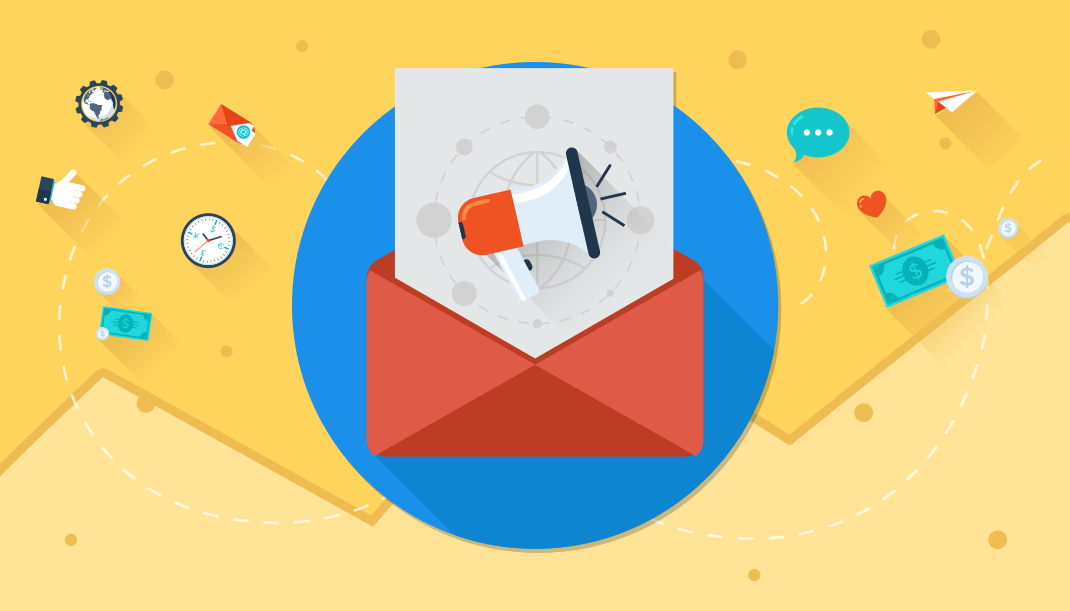Turbocharge Your Email Marketing with Customer Segmentation, Campaign Personalization, & Great Email Subject Lines
Despite the latest innovations in digital marketing, email marketing remains a top marketing strategy for marketers. According to Salesforce Marketing Cloud’s second annual 2015 State of Marketing report, 73% of marketers agree that email marketing is core to their business, making it a critical enabler of products and services.
Email’s resurgence coincides with the increasing number of smartphone, tablet, and phablet users. According to the Salesforce report (@salesforce), one-third of surveyed marketers said their subscribers read emails on mobile devices at least 50% of the time. Moreover, email marketing generates a significant amount of revenue for both B2B and B2C companies, and is viewed as the highest marketing activity in terms of return on investment.
Despite email’s robust performance, “most companies invest much more of their time and money in channels with less revenue potential,” observes retention marketing platform provider Retention Science (@RetentionSci) in their report, “The Scientific Guide to Email Marketing”.
“Following the progression of other marketing channels, email has become more dynamic and personalized. Smart email marketers are moving beyond ordinary batch and blast campaigns, and towards more data-driven, scientific approaches,” the report observes.
Cookie-cutter email marketing (which Retention Science refers to as “batch and blast campaigns”) send marketers’ entire list static email campaigns in the hopes that the messages will resonate with a handful of leads and customers. Unfortunately, batch and blast campaigns are minimally influenced by customer data, are minimally segmented, and are minimally personalized.
On the other hand, targeted email marketing campaigns (which Retention Science refers to as “scientific email marketing”) implements data aggregation and analysis, customer segmentation (based on data insights), campaign personalization, and optimized timing. When batch and blast campaigns are compared to scientific email marketing, the latter emerges as the superior model.
The Power of Customer Segmentation
Overall, email marketing campaigns are improved when customer segmentation is employed. Customer segmentation “involves grouping together customers based on similarities they share.” By sending targeted and relevant messages to leads and customers, customer acquisition and retention are improved.
“By analyzing demographic, behavioral and transactional data, you can profile customers by their location, products they purchased and the time of their last purchase,” observed the report. Via the scientific approach, customer segmentation is taken a step further by analyzing all data sources to more accurately predict and profile customer behavior. [See Figure 1]
Predictive data analysis can be used to form the following useful customer segments:
- Predicted customer lifetime value
- Likelihood to convert
- Predicted order value
- Likelihood to churn
- High value customer
Campaign Personalization & Mastering the Email Subject Line
Customer segmentation and profiling can be used to facilitate campaign personalization. Campaign personalization encourages customers to make purchases, and could potentially extend the customer lifecycle to the advocacy stage.
Profiled customers can be sent personalized emails featuring products they have shown interest in. Incentives and promotions that would encourage them to make more purchases could also be emailed to them. The beauty of data driven customer profiling is that it allows marketers to target incentives to customers based on their past behavior and likelihood to purchase.
In contrast, batch and blast campaigns involving incentives and promotions often lead to reduced margins and squandered revenue because such campaigns do not take into account customer’s individual profiles and likelihood to purchase.
Email subject lines should also be personalized, as they have a direct impact on email open rates. According to Retention Science, personalized emails that include the recipient’s name in the subject line have higher open rates. Other actionable email marketing sales statistics can be found in this helpful compilation by LinkedIn publisher Zachary Lukasiewicz.) @ZachOnLinkedIn
As the email’s subject line is one of the first things recipients notice, it’s no surprise that 33% of email recipients open emails based on the subject line alone. Business Insider published a valuable list of tips that will help marketers master the art of email subject lines, which in turn would lead to greater open rates:
- Always write a subject line (an email with a blank subject line is more likely to get deleted).
- Write the subject line first to set the tone for the body of the email.
- Keep your subject line short (the typical inbox shows 60 characters of the email’s subject line; mobile devices show 25 to 30 characters).
- Place the most important words at the beginning of the subject line and eliminate filler words.
- Be clear about the topic in the subject line.
- Use targeted keywords for inbox search and filtering
- Clearly indicate if you need a response
Many other valuable tips can be found in the Business Insider article by Jenna Goudreau (@Jenna_Goudreau).
Marketing Digest Writing Team
Latest posts by Marketing Digest Writing Team (see all)
- How Taco Bell Struck Gold with Its Memorable Viral Marketing Campaigns - September 15, 2015
- Salesforce Marketing Cloud Releases New Instagram Marketing Tools - September 12, 2015
- Chrome Begins Pausing Flash Ads by Default to Improve User Experience - September 3, 2015


